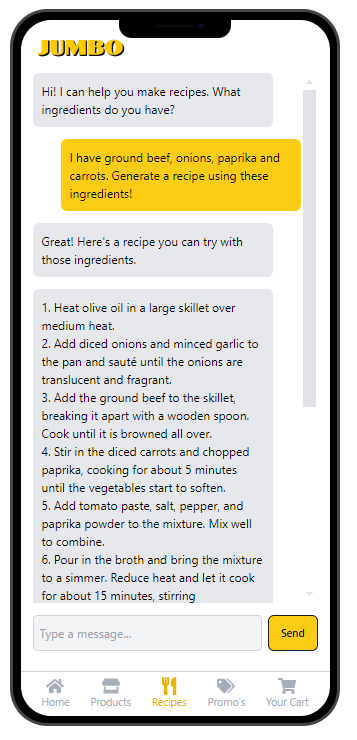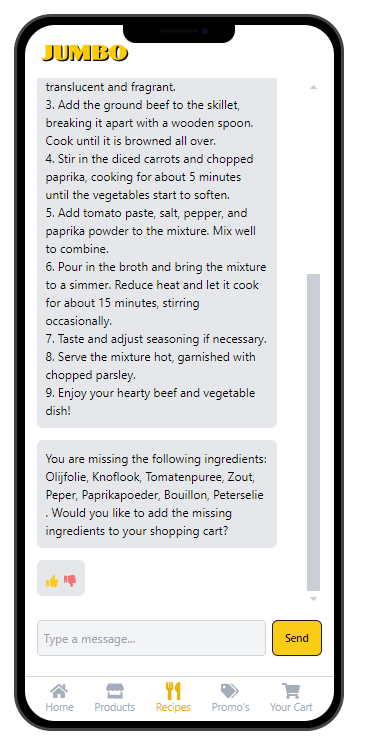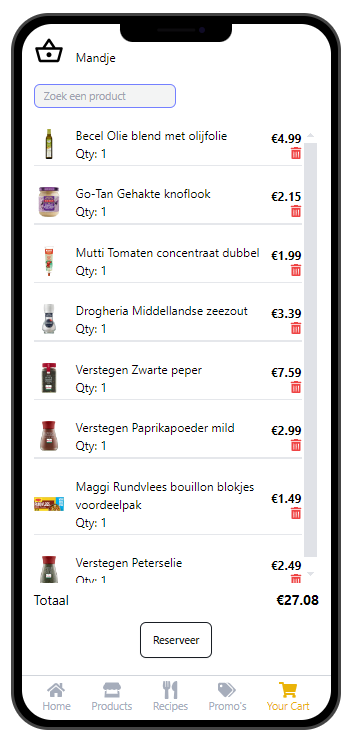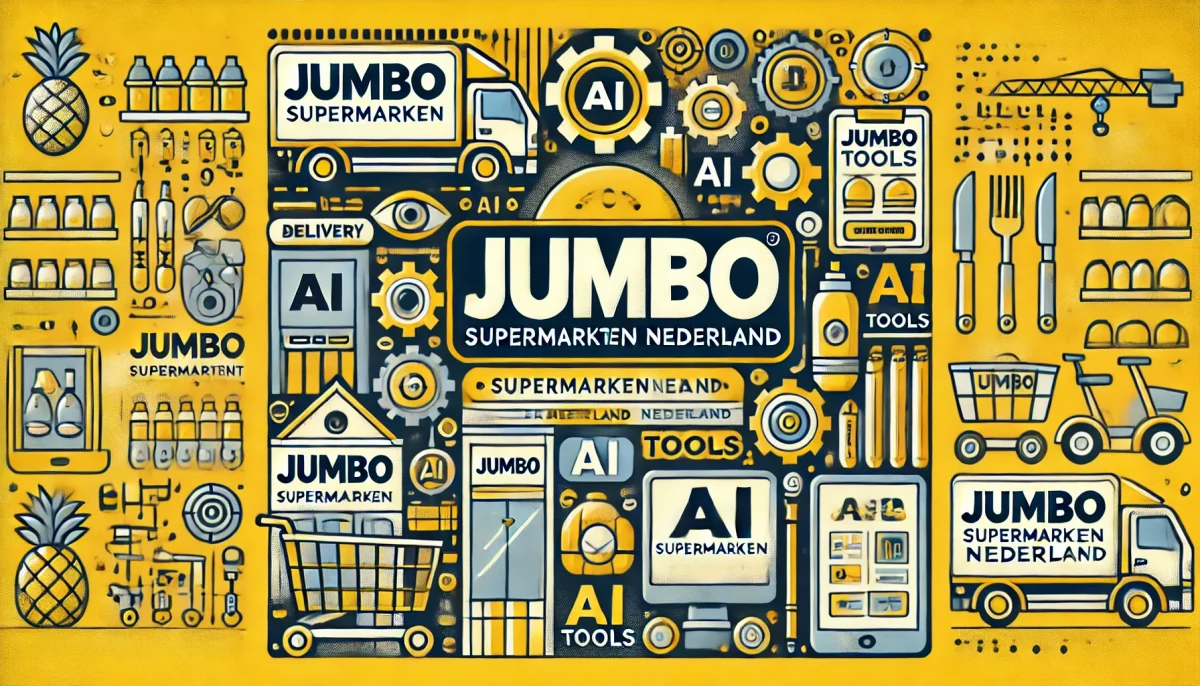Leveraging Generative AI tools to increase customer value
In recent years, AI tools have become increasingly integrated into our daily lives. One area where AI can make a significant impact is in the realm of grocery shopping. Jumbo, one of the leading supermarket chains in the Netherlands, already has an app that allows customers to earn points and view weekly discounts (Jumbo Extras). But we believe we can improve it further with Generative AI models.
In today’s generation, one of the challenges many people face is meal planning, often leading to leftovers going to waste. Our solution involves using AI to address this issue. While Jumbo’s app already provides product search and shopping assistance, it lacks a personalized, dynamic element. Our proposed AI feature will add value by generating recipes tailored to the customer’s preferences. Users can input the ingredients they have at home, and the app will generate a recipe while also suggesting the remaining ingredients that need to be purchased. This not only reduces food waste but also provides a practical way to utilize leftovers in new recipes.
Furthermore, if the app recognizes a user’s preference for, say, Italian cuisine, it will recommend a pasta recipe and offer a discount for purchasing the recommended ingredients. This is made possible by the AI analyzing consumer behavior, leading to increasingly accurate recommendations with each visit. This personalized approach encourages customers to try new recipes and products, thereby enhancing their shopping experience and boosting supermarket sales.
Essentially, this feature acts as a personal shopping assistant, catering to the user’s tastes and preferences. Over time, it can enhance customer satisfaction, loyalty, and retention by making customers feel valued and understood. From the company’s perspective, this strategy can lead to increased sales, as recipe-based discounts incentivise customers to purchase more products and explore niche items. Additionally, this initiative will help reduce food waste by providing insights into which products need to be consistently stocked and which items can be reduced in quantity.

Based on the proposed solution detailed in the assignment, we have built and deployed a working prototype, that mocks the Jumbo mobile app and adds the Recipe Generation tools. The image on the left represents the Homepage mockup. The two images below on the left are screenshots of a user interacting with the Generative AI model that generates recipes from existing ingredients, while adding missing ingredients as a separate list, which can be added to the Shopping Cart. The final picture represents the actual products suggested by the AI, added to the shopping cart.



Would you use AI tools to enhance your grocery shopping experience? Let us know below.
Group 10
Team Members:
- Alexandra Stancu (697789ms)
- Codrin Socol (744294cs)
- David Peța (744425dp)
- Ioana Buia (741838ib)
Reference List
- Thumbnail Photo: generated with a community-made GPT that uses DALL-E https://chatgpt.com/g/g-pmuQfob8d-image-generator). Prompt: Generate a cover photo for a blog post about the use of AI tools at Jumbo Supermarkten Nederland.
- The source code for the prototype shown above is available here: https://github.com/CodrinSocol/JumboRecipeGenerator






